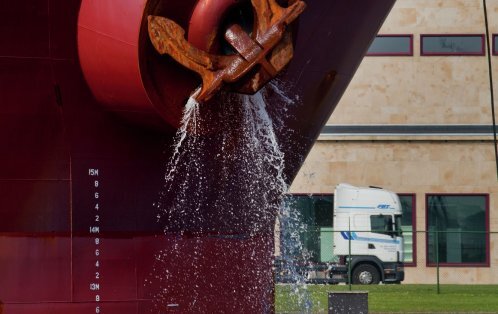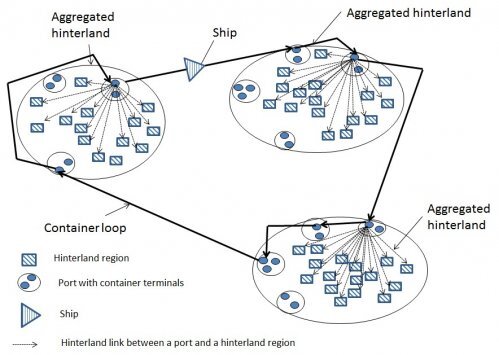Logistics chain cost calculation for interurban and urban transport
The University of Antwerp (TPR) has developed advanced logistics chain cost calculation instruments for interurban and urban transport. This technology enables companies to see which mode or combination of modes is most cost-efficient, both from an operational and a societal point of view.

Situation before
There has been a long debate in transportation on modal shift, and more in particular about why it’s not happening. Equally, quite a number of innovation initiatives in transport and logistics have been considered and/or attempted, many of which have failed. The reasons are rather simple: costs of transport operations are the most important decision criterion for users. This includes the cost of time, which, combined with operational out-of-pocket costs, is termed the generalized transport cost. Till date, there was no generally accepted calculation instrument that allows measuring the transport cost of transport operations, both at interurban and urban level, for different geographies.
Technology
For interurban (intercontinental and continental) transportation, TPR Chain Cost was developed as a model that allows calculating the generalised chain cost per TEU from a selected point of origin in the hinterland, via a predefined container loop, to a destination point in another hinterland.. The model is coded in C# and uses Microsoft Excel (data) and JMP11 (maps) as output formats.
The container loop encompasses the maritime leg of the supply chain. Figure 1 provides a general overview of the original model (Source van Hassel et al., 2016).

Figure 1. Structure of the chain model
In the model, different aggregated hinterlands are connected via a route along ports (bold lines in Figure 1). The aggregated hinterlands are defined as a summation of different smaller geographical areas, which in Europe correspond to NUTS-2 areas. Each aggregated hinterland is served by at least one and usually by several ports. Each port is built up of a set of terminals, all of which have their own set of characteristics. From each port terminal, the hinterland connections via road, rail and inland waterways (if applicable) to all the disaggregated hinterland regions are incorporated into the model.
In order to calculate the generalised chain cost from a point of origin to a destination point, the model must both calculate the total cost of the ship, and also incorporate the cost of transporting a container from/to a hinterland area to a port at both ends of the chain, plus the cost of a container in the port phase (port dues, pilotage, container handling, etc.) at the ports on both sides of the transport chain.
An important element of the generalised cost is the transport time. The transport time for the entire transport chain is therefore incorperated in the model. This means that the transport time from a hinterland region (including a dwell time at an inland terminal for rail or IWT) to a port, the dwell time of container at a deepsea port, the maritime transport and the reverse port and land transport times at the destination hinterland are taken into account. This means that a change in a loop structure will impact on the generalised cost of the total logistics chain (including the transport time).
For urban transportation, a similar cost calculation instrument was developed that takes into account the specifics of various urban distribution solutions, for calculating the cost per transported parcel. General cost components include wage and vehicle costs and transport distance. For specific applications, specific transport characteristics are included. For e-commerce for instance, the number of available pick-up points, the number of packages delivered, the geographical dispersion of demand, etc. are included as characteristics in the cost function. For retail delivery, the eventual use of urban consolidation centres, the number of shops to be delivered, the number of shops with warehousing space, etc. are incorporated.
For both interurban and urban transport, the calculation instruments can deal with the operational as well as the societal costs.
About the researchers - research group
TPR (Department of Transport and Regional Economics) is committed to be an international centre of excellence for fundamental and applied academic research in transport economics, logistics and regional economics. Its mission is to improve transport and logistics for our society and the business community. Its research results in theories, applications and instruments to enhance existing academic knowledge, transport policy and supply chain environments. Therefore, TPR conducts innovative and multi-disciplinary research within an international context and organizes educational programs from bachelor up to PhD level. TPR pursues results that are academically sound, economically viable and supporting sustainable development. It values a critical and an independent approach and an open communication.
More information
University of Antwerp
Valorisation Office
Middelheimlaan 1
2020 Antwerpen
Phone: +32 3 265 88 69